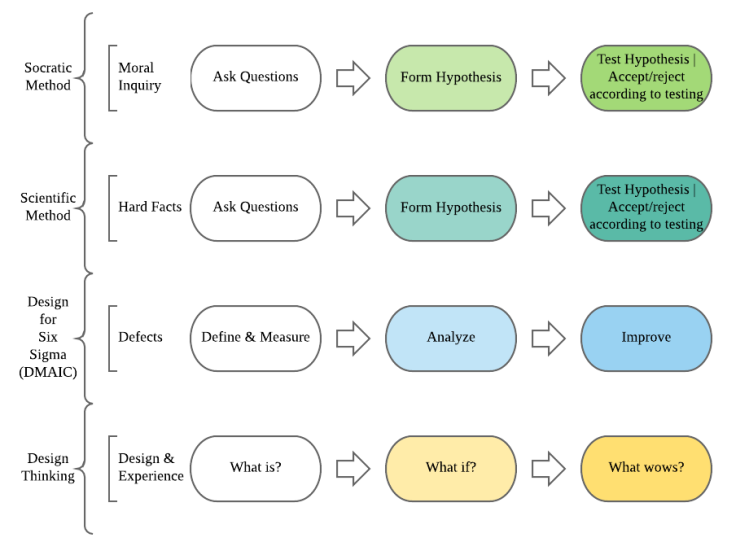This post is part of a series on innovation and problem-solving methods that starts here.
We’ve all tried something and later realized it was a pretty bad idea. Vision is always 20/20 in hindsight.
If this uncertainty is a given, then somehow… there has to be a way to have the bad ideas without causing catastrophic consequences. If learning must include errors, then allowing for the room to make these errors is a critical part of the planning process. There usually is a pretty fine line between a ridiculous idea and a great one, and the categorization isn’t always clear at all! Ask any serial investor, and they will have a story about a great big company they discounted. Ask an inventor and they will tell you how many awful, borderline embarrassing things they came up with before they “got their big break” or at least found a comfortable space in which to operate and offer value. Ask a good manager, and they will tell you how many errors in judgment they made along the way. There are lots of books on this topic, if anyone is looking for recommendations for more on this topic, do let us know.
In the meantime, let’s revisit our 4 frameworks and see what they say about what to do next (after step 0, step1, and step 2):

See a trend?
Step 3: Test…Improve…determine “what wows”… Aren’t these all types of fancy ways to say….”try stuff“?
It’s surprisingly simple, yet so difficult to do because it takes energy, and involves the potential to fall flat on your face in front of an audience. Sadly, very few people are immune to this, but if you’re smart about it, you just might fail in public while very few people notice. Yep! People have their own fish to fry. You might also be able to fail in controlled environments (this would be my choice). The point is…collect the data that you need, the insight you need. Raise a little dust, create the disturbance, disrupt your own ways, but then make sure you let the dust settle to see what shifted, what broke, and what you can do better.
Each one of the methodologies listed above has its own set of comprehensive tools to complete each step listed, and they are each worth studying and using. Though in essence, there seems to be an agreement amongst the 4 methods, that the sequence: Listen – Hypothesize – Test – Improve – Repeat is worth remembering.
Will you make an effort to go through this process?
Give it a go, it will keep you, your project, your team sharp and nimble! And if you need help, let us know!
See you next time for the last step, happy trying in the meantime, and do let us know how it goes!
____________________
Therese Karitanyi is MD at Kemura, she is into creating systems and environments that allow big and small genius ideas to come to life
info@kemuraltd.com

